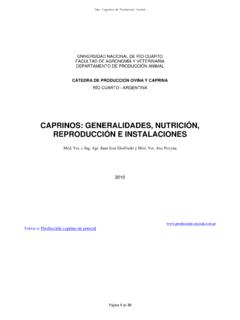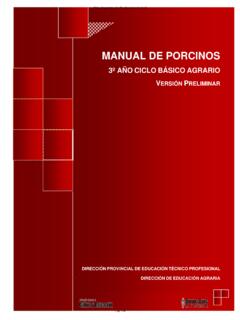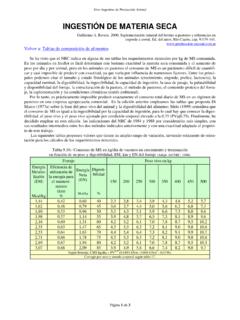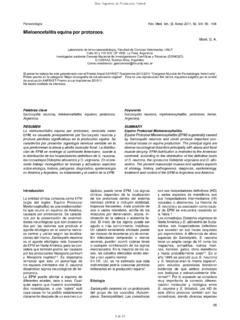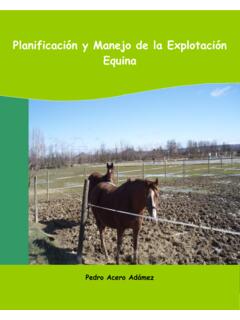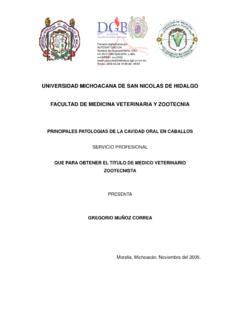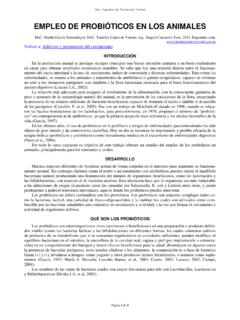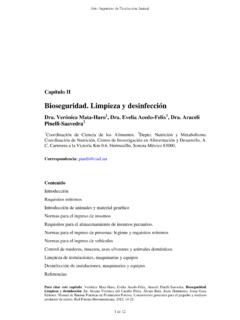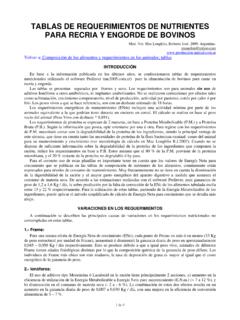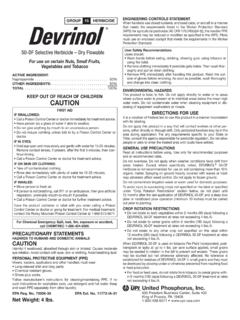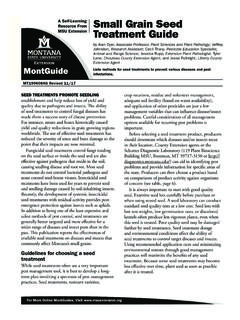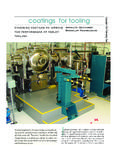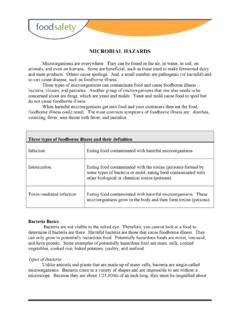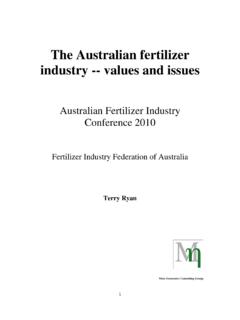Transcription of 281 GRAINS IN NUTRITION FOR FARM ANIMALS
1 GRAINS IN NUTRITION FOR farm ANIMALS 281. GRAINS IN NUTRITION FOR farm ANIMALS . Verstegen y van der Poel Wageningen University, Dept. of animal Sciences, animal NUTRITION Group, Marijkeweg 40 6709 PG Wageningen, The Netherlands A. INTRODUCTION. N. GRAINS as cultivated grasses are grown in nearly all parts of the world. The GRAINS are very important components in the diets of farm ANIMALS and also for man. The world production a few years ago was about billion tons of cereal GRAINS and 330 million D. tons of protein meals. This production of GRAINS was estimated to yield about 800 million tons of byproducts. GRAINS have properties which makes them very suited for feeding our ANIMALS . They have a high content of energy yielding components.
2 In addition they have a very low FE. moisture content and they can be stored for very long periods of time if the conditions for storage are right. In Figure 1 the grain and its part are shown. Figure Generalised scheme of a grain (taken from Kent and Everts, 1994). Error! No se pueden crear objetos modificando c digos de campo. The nutritional value is most related to the starchy endosperm. The aleurone layer also is an endosperm tissue. Protein mass increases towards the periphery in the endosperm but cell sizes diminishes. In all parts of the world cereals or byproducts from cereals are used in the diets for ANIMALS . For some classes of ANIMALS kept in confinement like in poultry the cereal wheat is even considered the most important component of feed up to now.
3 There is considerable variation in properties between GRAINS which determine nutritional value (see table 1) and also within GRAINS there can be considerable variation. MADRID, 5 y 6 de Noviembre de 2009 XXV CURSO DE ESPECIALIZACION FEDNA. 282 M. VERSTEGEN y VAN DER POEL. Proportions of parts of cereal GRAINS (%). From Kent & Evers (1994). Cereal Hull Pericarp Aleurone Endosperm Embryo axis Scutellum & testa Wheat - Barley 13 Oats 25 Rye - Sorghum - Maize - Millet 16 5. A. Wheat has a relative high protein content in the endosperm and in addition it has two populations of endosperm cells. Also rye and triticale have two kinds of endosperm cells. N. Barley GRAINS have a hull which makes up about 13 % (7 to 25 %) of the seed and winter barley has more than summer barley.
4 Closer to the equator the hulls part decreases. Oats endosperm cells have thicker wall than wheat and they contain some oils. In D. rice the husk is about 20 % of the seed. Starch granules in rice are similar to those in oats. There are many types of maize. The dent corn is the most abundant maize and is the largest of all GRAINS . Most differences between GRAINS are associated with endosperm character and shape. Sorghum has tannin in its pericarp and endosperm cells are similar in size and appearance as maize endosperm cells. Millet is about 1/3 of the size of sorghum. FE. The variation in nutritional value within and between GRAINS has been the focus of attention of scientists in many fields. For nutritionists the focus is on factors which determine nutritional value of GRAINS .
5 But techniques available at present to measure all traits which do fully account for this variation in nutritional value is not all known. This paper considers some aspects of the utilisation of GRAINS in various classes of farm ANIMALS and some reasons for variation. ENERGY FROM GRAINS IN animal FEEDING. GRAINS are used worldwide in ANIMALS feeding. To use the grain optimally one must match the characteristics of GRAINS and use of the grain in the animal . Differences in feeding properties are not only associated with macroingredients like starch, protein and lipids but also with other components like non starch polysaccharides which can have a big influence due to their physical properties (see table 2). MADRID, 5 y 6 de Noviembre de 2009 XXV CURSO DE ESPECIALIZACION FEDNA.
6 GRAINS IN NUTRITION FOR farm ANIMALS 283. Polysacharides in GRAINS (CHO) consist mostly of starch. There are also other polysaccharides called the non starch polysaccharides (NSP). They form a wide range of components like pentosans (about % in barley % in wheat and to 12 % in rye). and B glucans ( to 4 % in various GRAINS ) see Wiseman 1990). Table Carbohydrate (CHO) composition of some GRAINS and digestibility of NSP. in pigs Feedstuff Total NSP* (%) Starch Dig of NSP. CHO (%) sugars (%) in pigs(%). Maize 73 10 63 45. A. Wheat 71 10 61 42. Corn gluten feed 61 39 22 46. Wheat bran 62 47 15 44. *Calculated as organic material minus crude protein, crude fat, starch and sugars and may thus include other components, such as lignins N.
7 The energy in GRAINS available to ANIMALS can vary widely between GRAINS and animal species. As an example for wheat in Canada Zijlstra (2005) reported a range energy contents of 14 to 19 MJ ME per kg DM for growing pigs (Zijlstra, 2005). In Australia Van D. Barneveld (1999) reported to MJ of DE per kg wheat. Similarly in broiler chickens Hughes and Choct (1999) reported a variation of to MJ AME per kg wheat. This is important because Hughes and Choct (1999) stated that GRAINS and its products can make up more than 80 % of the diet for poultry For barley ranges of the same magnitude have been reported. This variation is important because cereals are FE. mostly used for their contribution to energy metabolism. When ANIMALS differ in their capacity to digest starch from different GRAINS this will give a different energy value.
8 It is important to notice that it depends on the expression of energy which gives the most accurate representation of energy utilization for the animal . Worldwide different expressions for ANIMALS are used. It is clear that it is most easy to determine gross energy or calorific value (GE) of a feed. For digestibility (DE) more laborious laboratory or animal determination is needed and measurement of metabolizable energy (ME or AME). requires even more sophisticated techniques and net energy (NE) which represent energy gain in the body tissue from feed energy is the most complicated. Of this expression net energy is most near to the animal . In fact net energy is what ANIMALS deposit in their body from feed above maintenance and this is than extended to the whole feed.
9 So energy is expressed in various ways. When based on pig data Black (2008) mentioned that feeds with the same DE content gave a variation energy deposition of 14 % , when data on ME. were used this variation was 7 % and for NE the variation range was 4 %. So it must be concluded that NE is most accurate but also most difficult to measure. In Australia a large study was made on the variation in nutritional value of cereal GRAINS across livestock. From MADRID, 5 y 6 de Noviembre de 2009 XXV CURSO DE ESPECIALIZACION FEDNA. 284 M. VERSTEGEN y VAN DER POEL. this study it was stated (Black,2001) that there are only very small differences in the available energy content of individual GRAINS across ANIMALS species except the low energy content of sorghum for cattle and horses.
10 Figure Relation between AME in broilers and Extracted NSP. 18. Rice Apparent Metabolisable Energy 16. Maize Sorghum Wheat 14 Triticale A. 12 Barley Rye 10 N 0 5 10. Non-starch polysaccharides (% DM). D. The variation which exists can be mostly explained by gross chemical composition. More recently however Gutierez-Alamo (2008) concluded from a series of studies with different wheat varieties that energy value is not accurately predicted from its FE. physico-chemical properties. And among the variables studied she found that starch content was the variable most related to the energy value of wheat in broilers. This does not exclude that differences between GRAINS like in physical properties associated with starch granule characteristics and endosperm matrix will contribute to variation in energy value.
